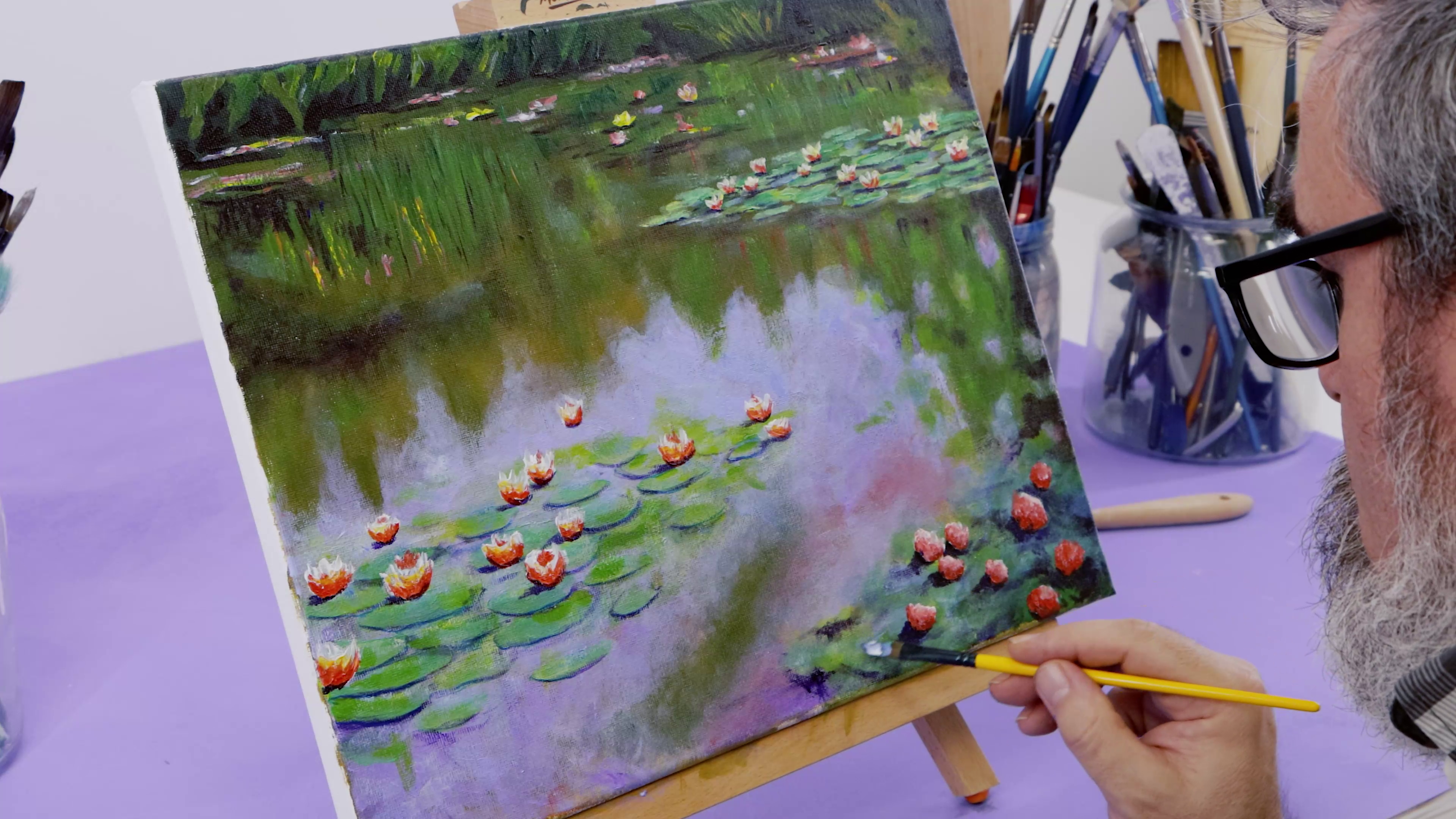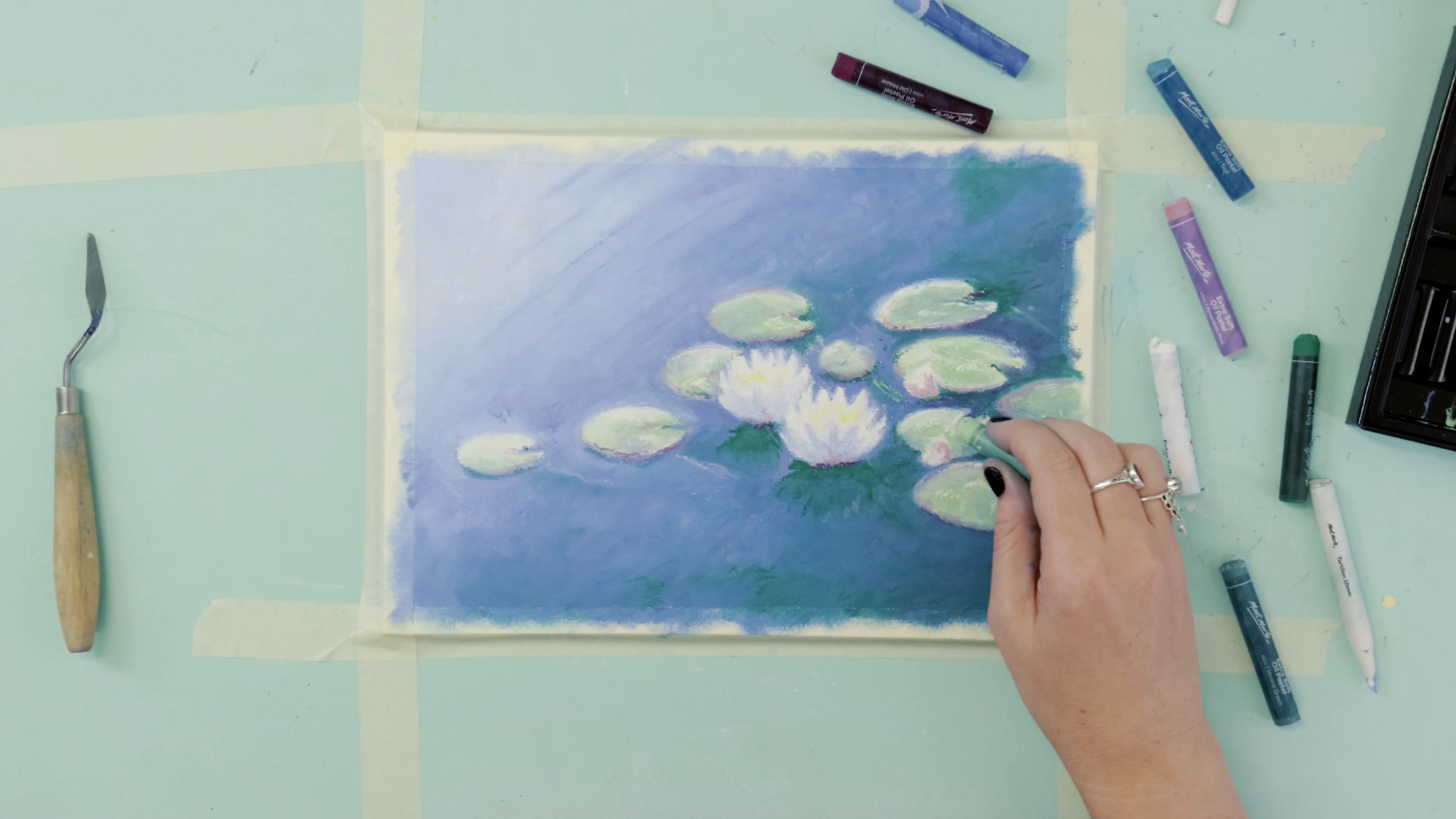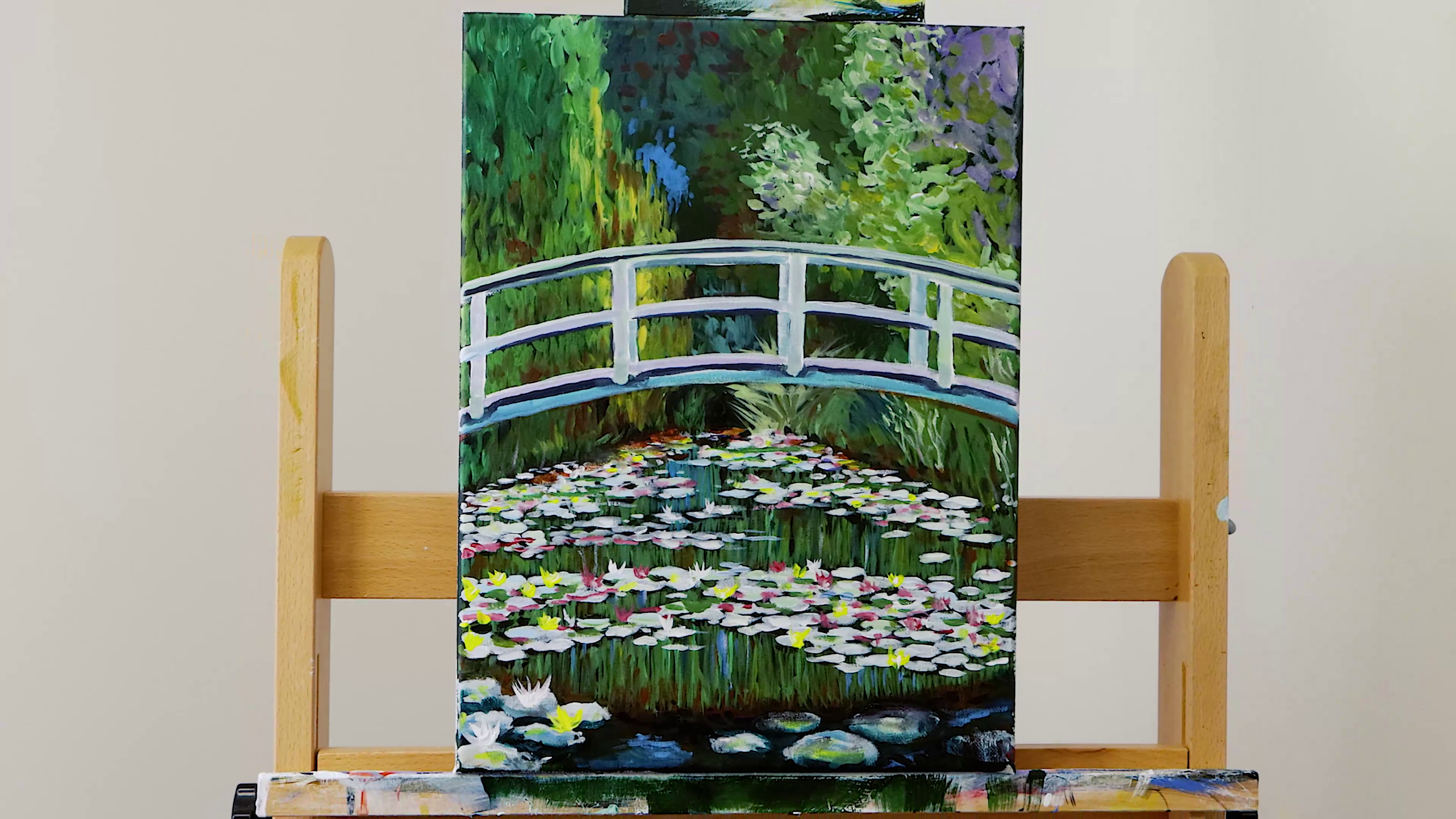Monet Inspired Acrylic Art Lesson
Refer to the composition guide, and lightly outline the areas of the canvas where the main elements will lie.
Next, create the main background tone by mixing Medium Yellow, a touch of Purple, a touch of Ultramarine, and some Vermillion. This should look like a Sienna colour (see image below).

Separate this mix into three sections.
Mix in Sap Green and a touch of Vermillion into the first section (this should now be an olive tone).
Now, mix in Phthalo Blue to the second section to darken it.

Starting at the top of the canvas, use short, vertical stokes, lay the second section colour in.
As you move down the canvas, start mixing in the third section. The brush will have lots of green in it, so you'll get lots of variation.

Add more green to the right side of the canvas and keep building up the surface as you go.
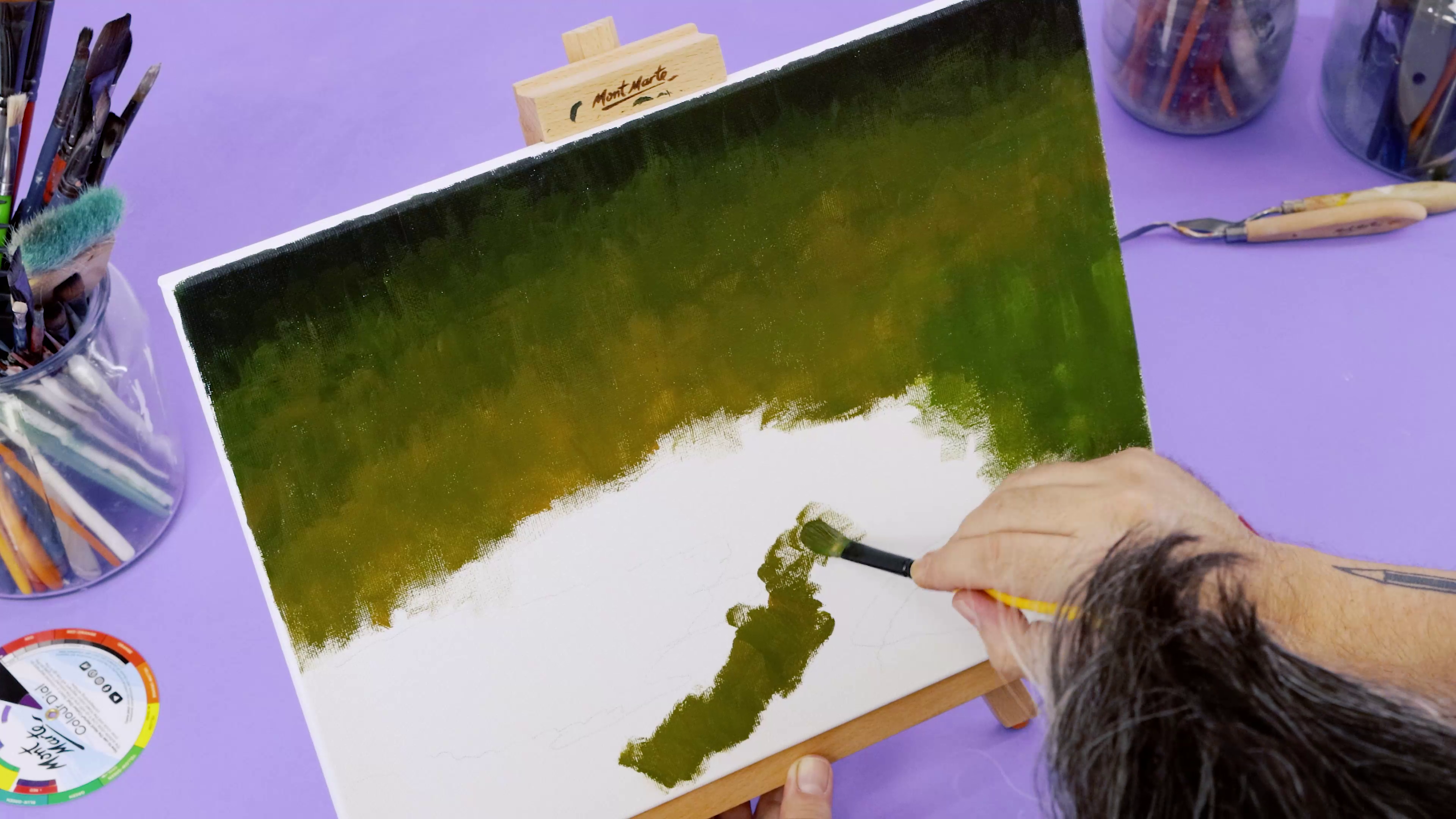
In the areas where the lilies will be, don't lay any tone into the canvas and instead dip the brush into the water and lay a tinted wash into those areas.

We can then allow this coat to dry.
Next, we can lay on the second coat, the reflection.
Mix Zinc White, Ultramarine Blue, and a touch of Purple.

We start in the bottom left side of the canvas and scumble this on. Scumble basically just means to lightly charge the brush and scrub it on to the surface. Work up the canvas and when it comes to the edge where the reflection of the sky stops, we use a dry brush to drag the blue tone very lightly into the green.
Here and there we can scumble Vermillion into the reflection.

Now it is time to create some green vegetation.
Mix Medium Yellow and Sap Green to create a contrasting green to the base colour. As you go, mix in varying amounts of yellow to create different shades of greenery.
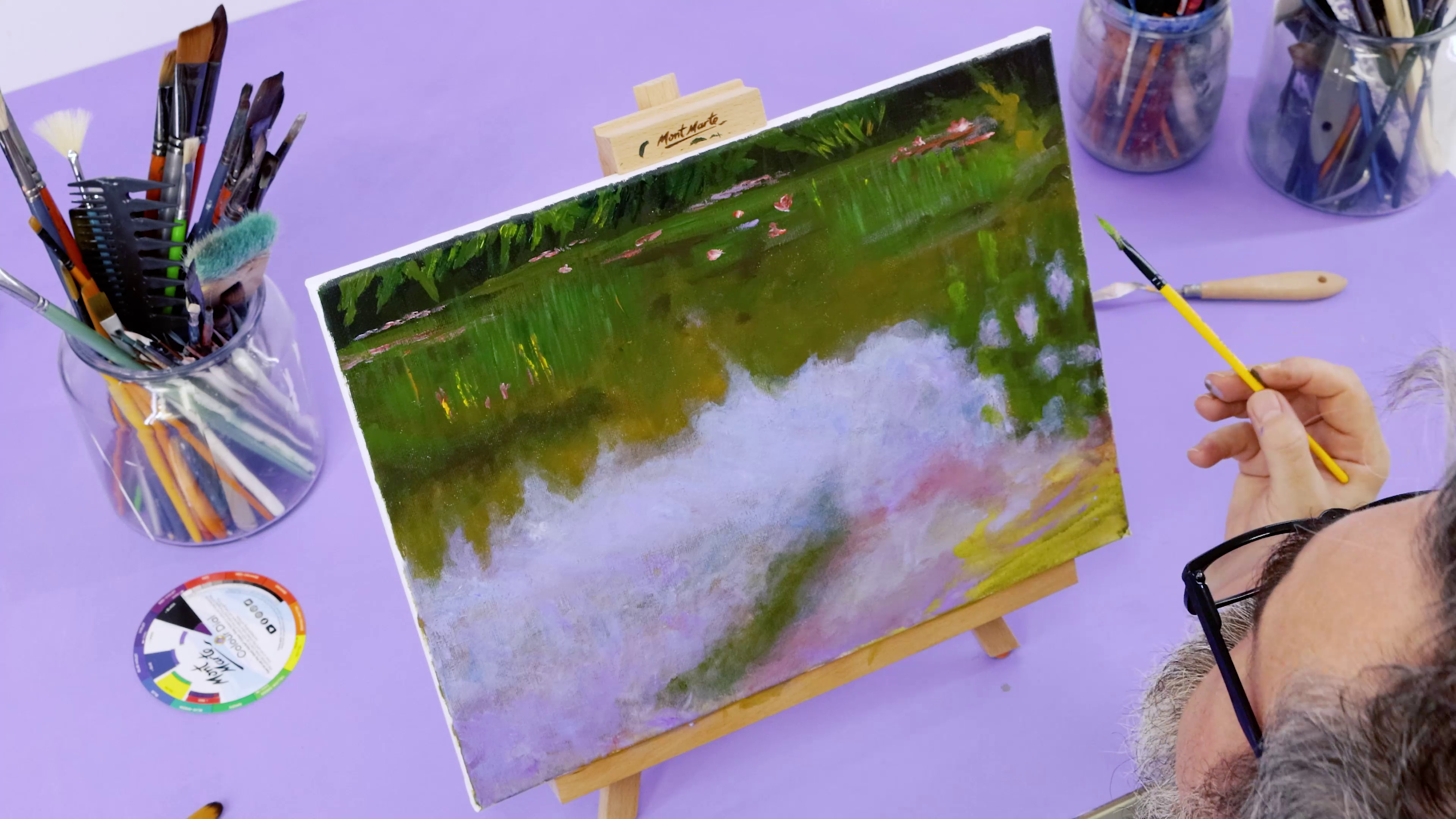
In the top half of the canvas, use varying widths and lengths of vertical strokes to suggest the complex vegetations. Be sure to let the background colour show through the vegetation to suggest shadows.
Add random bursts spots of yellows and reds to suggest different flora and fauna.
A dark colour can now be created with Purple, Red and Viridian. Lay this in appropriate areas where shadows would be.

We can now add our first bunch of lily pads.
For these, we create a pastel green from Viridian, Zinc White, and a touch of Ultramarine. Lay these in with small horizontal strokes.
Mix into the lily pads a little yellow, blue, and white as you go to create a subtle difference between lily pads.
Use a thin line of purple to suggest shadows underneath the lily pads.

Now, create the lily pad flowers using thick circular applications of Zinc White tinted with a little Lemon Yellow. Vermillion can then be painted into the white.

The lily pads on the left of the canvas can be created in the same way. As these are closer to the viewer, they need to be larger.
Add differing greens with blue here and there to show they are partially submerged.
Repeat previous steps by using thin purple lines to suggest shadows and paint in the lily pad flowers.

Once these are finished, we can create the third lot of lilies in the right-hand corner.
As these lily pads are submerged, use various greens and blend these in well to create a blurring effect. This part of the painting is also in shadow, so blend in blues, and dark greens to suggest this.

Now, lay over the top of the dark colours, a light blue to both lighten it and suggest water reflections.

Repeat previous steps and paint in the lily pad flowers.

Use purple to create dramatic shadows beneath the lily pad flowers.
